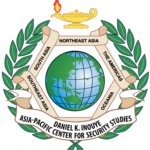Article Types
- Reports: ≤1500 word short articles on events, exercises, trips, conferences, projects, etc.
- Perspectives: ≤3000 word editorials, commentaries, opinions, policy papers
- Research: ≤6000 word systematic PRISMA reviews, original research, analytical papers
Title page: The title page should give the title of the article, and the names, addresses, qualifications and positions of all authors plus email address for the corresponding author. Articles must demonstrate clear relevance to security practitioners in the Indo-Pacific region.
Authorship: Authorship credit should be based only on substantial contribution by each author.
Abstract: An abstract is only required for Article Types 2 and 3 (see above) and must be structured according to the structure of the paper. Abstracts do not have references and are no longer than 200 words.
Summary: A 100-150 word Summary is required for all non-Research articles. This will be shown on the website as a description of the article.
Keywords: For Research papers, provide 3 to 5 keywords that are not used in the title to help further define the topic.
Keywords: Provide 3 to 5 keywords that add to those used in the title and help further define the topic.
Microsoft Word Styles: Use only Normal Style.
Headings: Only use two levels of headings that facilitate reading and understanding. Level 1 heading is bold and Level 2 heading is bold italic.
Numbers: Do not spell out numbers in text and do not spell out numbers over 10 at the start of sentences.
Tables and Figures: Insert appropriate tables and figures with suitable captions in the text where you want them to appear. Cite the Table and Figure in the text (e.g. Table 1 or Figure 1). Provide your Tables with titles and your Figures with legends. Tables and Figures must be self-explanatory. Explain all abbreviations. Ensure high quality. Provide all relevant units of measurement.
Acknowledgements: This is where authors may thank contributors who do not meet the criteria for authorship. These contributors must give their permission to be named here.
References: All papers must be adequately referenced, with citations appearing in the text. Any style of referencing may be used, but it must be applied consistently throughout the paper.
References to papers “in press” must mean that the papers have been accepted for publication. References to works “in prep” or “submitted” are not allowed. References to personal communication (pers. com.) and unpublished work are permitted only in the text, not in the reference section.
Direct quotes from published works or other people must be in italics or in quotes – never both.
Written permission to reproduce borrowed material, illustrations, tables or photographs must be obtained from the original publishers and submitted with the article. Borrowed material should be acknowledged in this style: “Reproduced by kind permission of …(publishers) … from … (reference)”.
Writing style: Good writing is an asset for all professionals and well worth the effort of acquiring. Some simple “rules” for better writing are:
- Use bullet points for presenting simple lists
- Use tables to present complex lists
- Use figures to present complex concepts
- Keep sentences simple and use easily understood language
- Use a spelling checker and a grammar checker
- Avoid one sentence paragraphs and paragraphs longer than five sentences
- Contractions like “don’t” are not acceptable in formal writing
- Use abbreviations only after defining them
A good standard of English is expected and poorly written articles will be rejected. The Editorial Office does not have the resources to assist in bringing written English up to an acceptable standard for publication. Make sure articles are checked by someone with a good command of written English before they are submitted to minimize the risk of rejection.
ARTICLE SUBMISSION
Checklist
Before making a submission, please ensure you have completed all the items in this checklist. If you have any questions at this stage, please contact the Editorial Office and we will be pleased to assist you.
- Read Information for Authors
- Supply names, titles, affiliations and emails for ALL authors
- Indicated the corresponding author by including their present address
- Indicate the type of article
- Obtain written permission if you use published tables or figures
- Clearly identify quotes using quotation marks or italics
- Use author-year style of referencing
- Prepare tables and figures according to instructions
- Use major headings according to instructions
Cover email
Include the following in your email:
- Proof that you are/were a past or present fellow or faculty of APCSS, such as course attended
- Title of article
- Author/s of article (cc the email to all co-authors)
If the article has more than one author, include the following text:
“All authors of this article made a contribution to the conception, design, analysis or interpretation of the work, drafted the work or revised it, approved of the final version, and agreed to be accountable for all aspects of the work.”
- Competing interest statement: “The author/s have no competing interests to declare”
- Research papers that use data from individuals and present identifying information must include a statement confirming ethics approval (or a statement that it was not required)
- Duplication statement: “This article has not been submitted elsewhere for publication”.
- Send your email to the “Editor” at nexus@apcss.org





